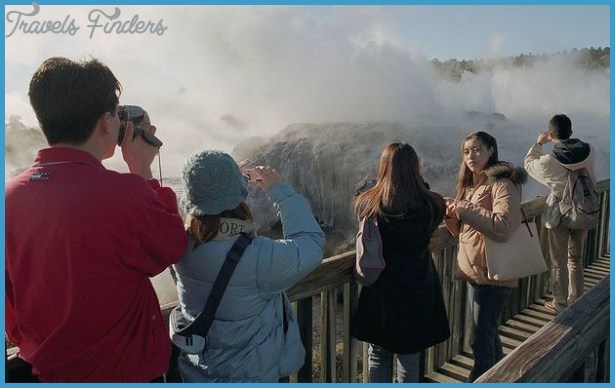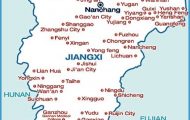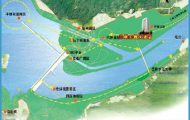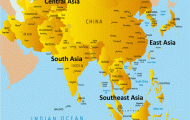The Orchid Pavilion, set in impressive natural scenery with bamboo woods and winding streams, is situated 14km/9 miles to the south-west ofthe city. A stele with an inscription by the Emperor Kangxi (reigned: 1662-1723) is housed in the pavilion. Outside the pavilion a picturesque little lake extends for some 30m/32yd. In the centre of this lake is a stone tablet with two ideograms which, roughly translated, mean “goose pond”. They are attributed to Wang Zizhi (see Famous People), who in the year 335 wrote the famous “Preface to the Orchid Pavilion Poetry Ccollection”. The pavilion was therefore already in existence in the 4th c.
In the Wang Zizhi Memorial Hall, a statue of Wang Zizhi is worshiped. On both the side walls can be seen a few stone tablets into which several 7th c. inscriptions are carved concerning the above mentioned preface.
Very near to this stands a further pavilion which houses steles with inscriptions by the emperors Kangxi and Qianlong (reigned: 1736-96).
Province: Hubei. Area: 12sq.km/5sq. miles Population: 198,000 (conurbation 240,000) Shashi lies on the north bank of the Changjiang, in the centre of the province of Hubei at 112°13’E and 30°22’N.
It is 240km/149 miles from the provincial capital Wuhan (1 hour by air), and can also be reached by bus or by ship. There are air services to Shanghai (4 hours). Canton [2’A hours), and Changsha (V/i hours).
The city has a long history dating from the Xia dynasty (21-16 c. B.C.). Under Zhou rule (1066-221 b.c.), the city was called Jiangjin, which means “port on the river”. In 689 b.c. Shashi became a kind of outpost to the Chu dynasty capital of the time. The great poet Qu Yuan was born here in the 4th c. In the Tang era (618-907) trade considerably improved and under Ming rule (1368-1644) the city expanded even further. At that time Shashi had 99 main roads, each of which was intended for a specific business or craft.




















